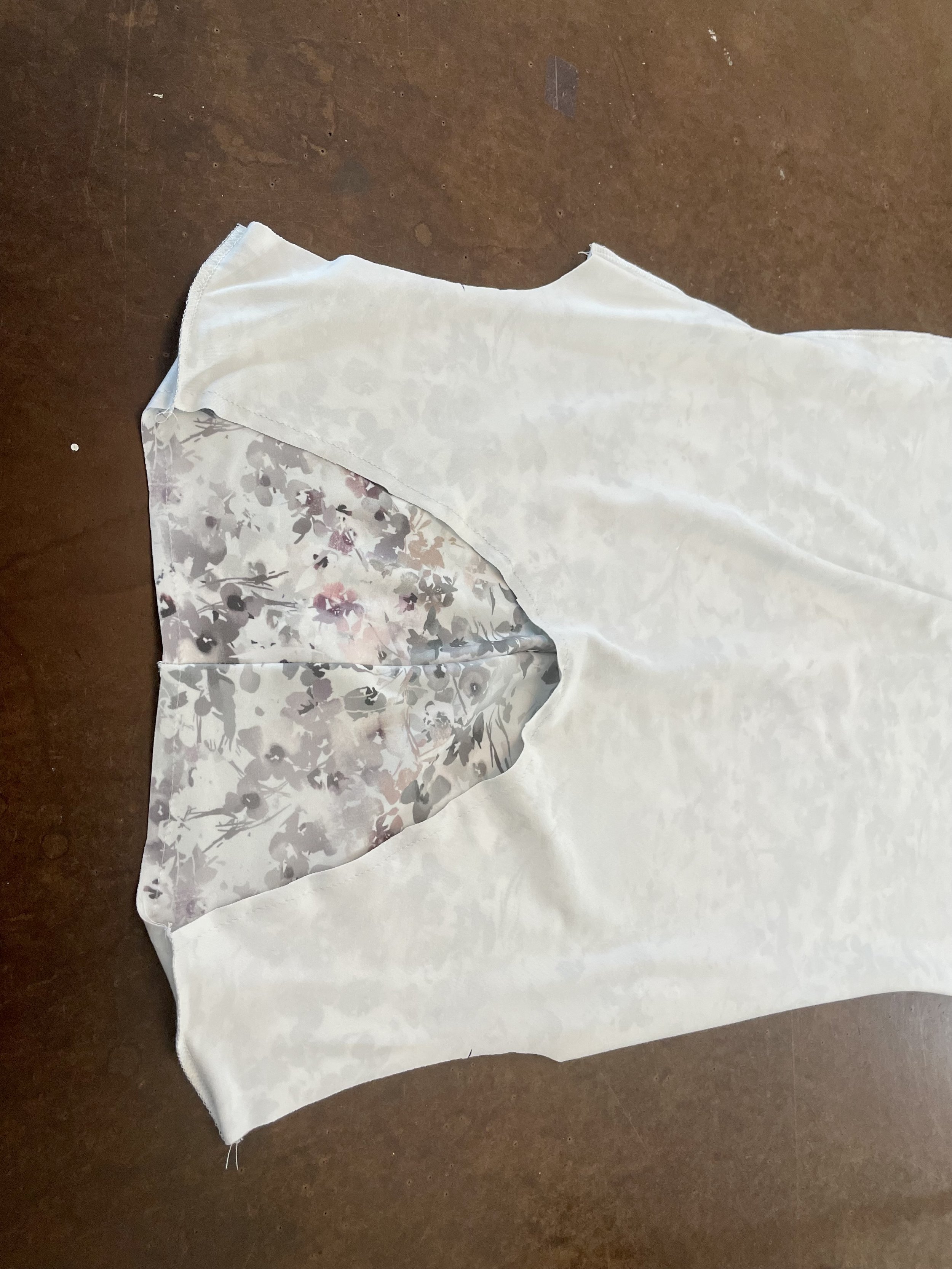This original Pagoda shoulder pad shows each layer's separate pieces as they are back together.
#1 This is the first layer of bias cotton interlining that is on the bottom of the shoulder pad.
#2 This is the second layer bias cut of cotton interlining layer on top of the first piece.
#3 The third layers are several pieces of cotton felt cut and layered on top.
#4 the forth layer is of cotton batting layed on top of the other pieces.
#5 The fifth layer is a two piece pattern sewn together in pellon interfacing that is the under part of the top half of the shoulder pad.
#6 is a bias cut cotton buckram sewn together and layed at the bottom half of the top layers as shown.
#7 This is a bias cut cotton buckram two pieces sewn together and layed going upward on the shoulder pad as shown.
#8 Are layers of cotton batting layered under the seventh piece.
#9 The ninth layer is cotton felt layed down towards the shoulder pad as shown to give dimension on the shoulder pad off the shoulder.
#10 The tenth layer is a small piece of cotton batting layed in the ball of the top half of the shoulder pad.
#11 The eleventh leayer is a bias cut two piece pattern sewn together made out of cotton buckram layed on top of the outer top layer.
#12 The twelfth layer or outer top layer is a two piece pattern sewn and formed as shown in pellon stabilizer.





























































































